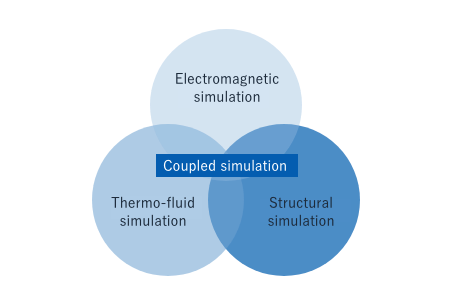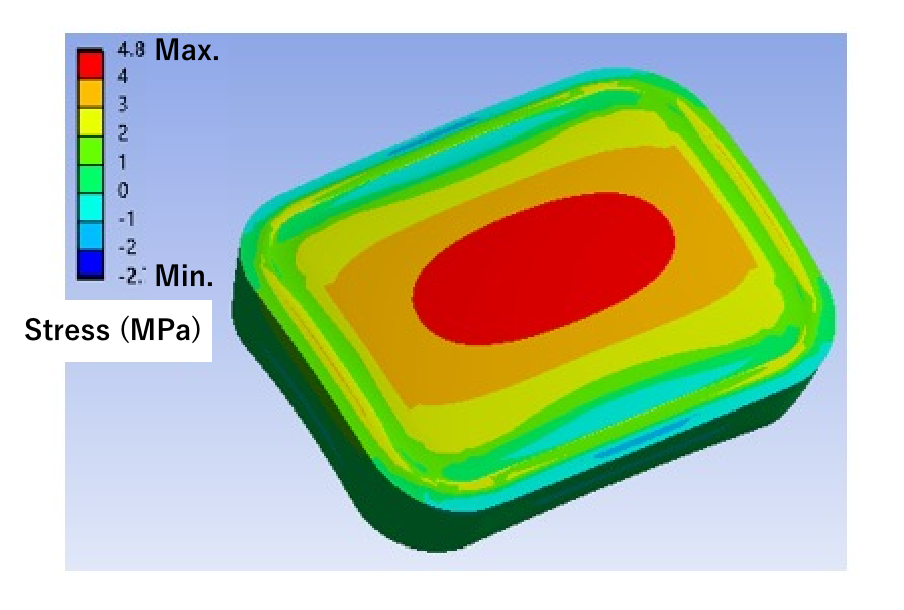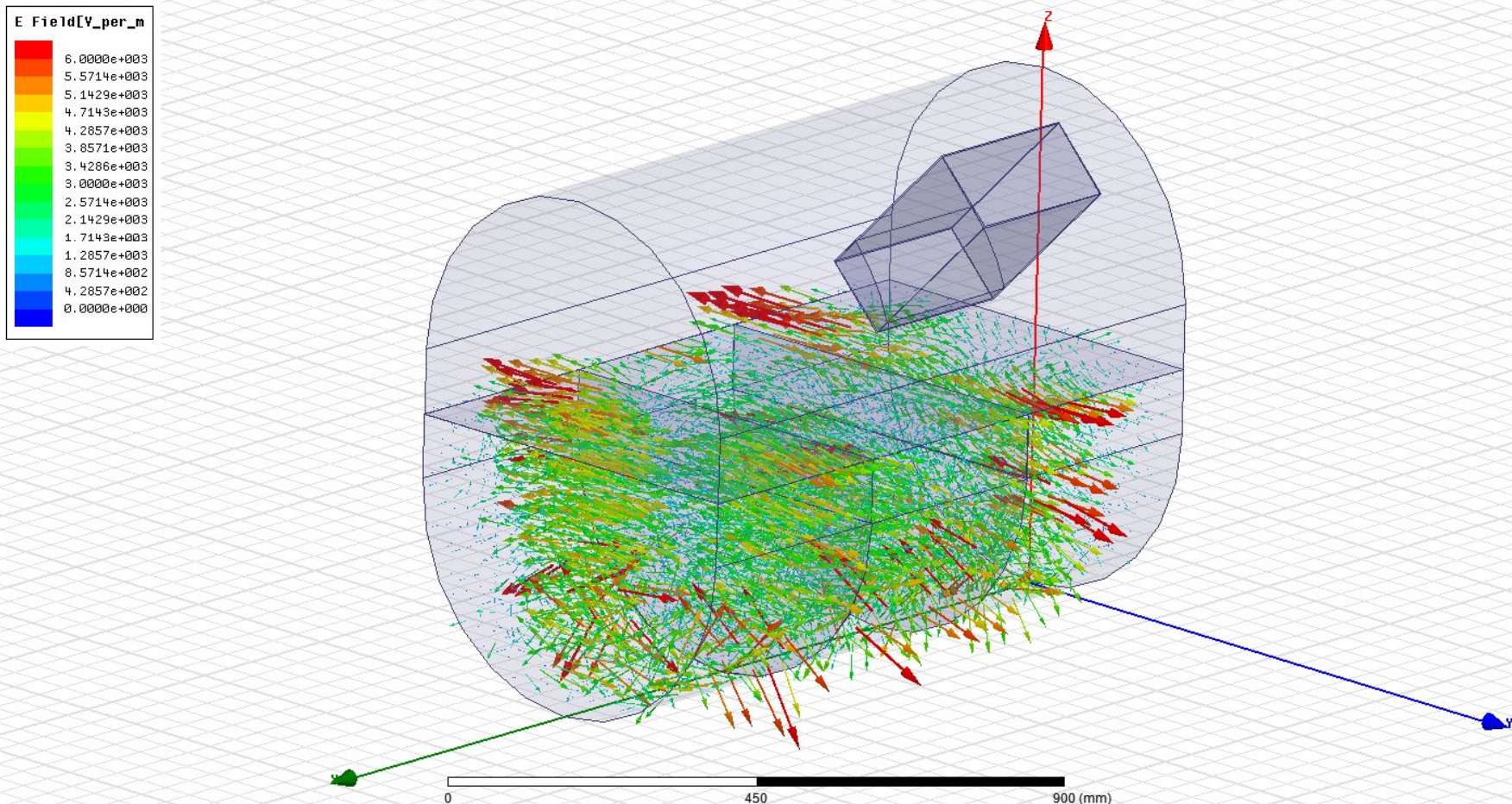Flow – 03
Reactor Design and Simulation
Once the microwave reaction system has been optimized in the laboratory, the next stage is designing the scaled-up reactor. Numerical simulation using a high-performance computer plays an important role in reactor design, as it can reproduce the performance of the reactor on a computer, significantly reducing the number of prototypes and manufacturing costs.
Our simulation technology is founded on three pillars: electromagnetic field analysis, thermal fluid dynamics analysis, and structural analysis (Figure 1). Standard chemical companies do not deal with microwave and as such do not conduct electromagnetic field analysis, whereas our technologies are characterized by the three pillars of electromagnetic field, thermal fluid dynamics, and structural analysis to design reactors efficiently.
Electromagnetic field analysis visualizes the distribution of the microwaves within the reactor as well as the thermal energy to the material from the microwaves. Thermal fluid dynamics analysis shows the progress of chemical reactions in the reactor, liquid flow, and temperature changes in the material. Structural analysis can determine the strength of the reactor to ensure that it will not break due to the high pressure inside the reactor. Depending on the objective, we may employ an advanced technique known as coupled analysis, which combines several methods.

Role of Electromagnetic Field Analysis
In scaling-up a microwave reactor, the shape of the reactor is designed to ensure the most efficient irradiation of the microwaves to the target material. In the analysis, the actual reactor shape and material arrangement are first reproduced on a computer. The materials are assigned the complex dielectric constant we measured. Next, solving Maxwell’s equation visualizes the intensity distribution of the microwave electromagnetic field spreading within the reactor and the heating quantity distribution in the target material (Figure 2). Then, the shape of the reactor is determined so that the material to be heated is irradiated by microwaves in the most efficient manner.
Connecting a waveguide for microwave irradiation to a reactor currently used in a chemical plant would not irradiate the heated product efficiently, because conventional reactors are not designed to optimize microwave heating. Electromagnetic field analysis is our core technology.
Measures to prevent microwave leakage are essential to ensure the safe use of microwave reactors. For example, A large opening in the reactor may leak microwaves and negatively affect the surrounding environment. We use electromagnetic field analysis to design our reactors so that the possibility of microwave leakage is adequately eliminated.
Role of Thermal Fluid Dynamics Analysis
In thermal fluid dynamics analysis, the temperature of the material to be heated is calculated based on the heating quantity distribution obtained through electromagnetic field analysis. Operating conditions are specified so that the temperature of the heated material becomes the value at which the chemical reaction proceeds most efficiently. The temperature of the heated material depends not only on the amount of heat generated, but also on the flow of the surrounding liquid and the progress of the chemical reaction. Thermal fluid dynamics analysis is very complex because it solves the equations of motion and energy of the liquid in combination with chemical reaction equations.
Often, the electromagnetic field distribution of microwaves in a reactor is not uniform, resulting in uneven temperatures in the material to be heated. In such cases, the heated material is stirred and mixed to even out temperature variances (Figure 3), and we use an advanced technique that couples the electromagnetic field with the thermal fluid dynamics. The shape of the mixing impeller and its rotational speed are varied as parameters to determine the operating conditions that create a uniform temperature.

Role of Structural Analysis
Often the pressure inside a reactor differs from the atmospheric pressure. Applying large amounts of pressure will distort the reactor housing, but stress is simultaneously generated to counteract the distortion. If the value of this stress exceeds a certain threshold, the reactor housing will be damaged.
In structural analysis, the pressure applied to the reactor housing is used as a boundary condition, and the strain and stress values generated inside the housing are calculated to determine the strength of the housing (Figure 4). This allows us to design reactors that resist pressure.

